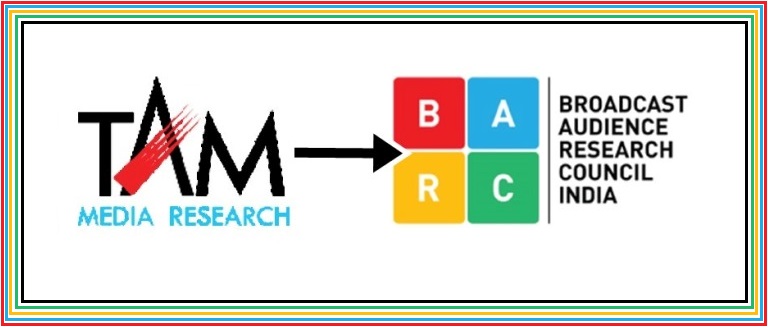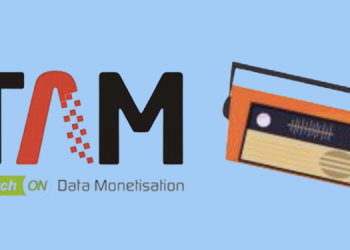TAM Media Research Pvt. Ltd, The television audience measurement service, operating in India for the last 15 years, has been abandoned by the broadcasting and advertising industries, but is yet to shut down its operations.
It continues to offer radio audience measurement (RAM), measurement of returns on sports sponsorship and other advertising-related products even as its main source of income from television audience measurement has taken a hit.
Eager to improve its relationship with advertisers and broadcasters, it still publishes television viewership numbers even as it gears up to launch two new software products for media planning. A new Web audience measurement service for digital media is also on the cards.
Although officially discarded in favour of the new currency promoted by the Broadcast Audience Research Council India (BARC), TAM doesn’t seem to have lost all on the broadcasting front. Privately, data from both TAM and BARC is being used by the television industry. (BARC is promoted by the joint industry body comprising broadcasters, advertising agencies and advertisers.)
Senior television channel executives admit to using both the currencies right now. TAM data is being referred to quietly even if most people have stopped subscribing to it, said a senior executive with a Hindi general entertainment channel. Top company officials responsible for media buying also agree that TAM is still used as a reference point. They say that since the findings of the two surveys throw up similar numbers and trends, one data set verifies the other. In fact, both are released on the same day of the week with TAM publishing its results a tad earlier than BARC.
Another executive from a Regional GEC based in AP Market, who doesn’t wanted to be identified said that “As far as AP Market is concerned, still the sample size of TAM is larger than BARC and we feel that TAM is giving more accurate rating numbers that logically matches with circumstances and BARC Ratings at many times gave illogical numbers in the recent past. Moreover, BARC is also not responding immediately to the queries and doubts raised by the regional broadcasters and started displaying a government set up attitude, which is not the case with TAM.
To be sure, BARC is the official currency and all trading—buying and selling of commercial time on television—is done on the basis of its findings. But TAM numbers are often put to use for internal planning at agencies and channels alike. If a broadcaster plans a new show, it peruses TAM numbers and its historical data to fix a suitable time slot, target audience, on-air promotions and repeat telecasts on that basis. Some advertising agencies are also known to use it for their campaign plans. It is this sort of usage that has given TAM officials hope. They think that India may become a dual currency market even though historical evidence points to the contrary. ORG MARG-owned INTAM merged with TAM to offer a single currency way back in 2001. aMap, another audience measurement company that set up shop in India along the way, died in 2011.
In the last few years, TAM, the country’s only viewership measurement service, has been mired in controversy, facing flak from broadcasters for alleged corruption and its small sample size leading to skewed ratings. The company was also dragged to a New York court on the issue by news broadcaster NDTV Ltd. Eventually, a joint industry body of broadcasters, advertisers and advertising agencies set up BARC India for measuring television viewership. After several delays, BARC rolled out its weekly ratings at the end of April 2015.
Officially, BARC India, comprising broadcasters with 60% vote share and advertising agencies and advertisers with 20% each, cannot use TAM. However, a few among the stakeholders who cannot afford BARC, which is far more expensive than TAM, subscribe to the latter.
TAM’s future in India in its current form also depends on the outcome of the court case that one of its parent companies is fighting. In 2014, the government ruled that no advertising agency can own more than 10% in any television measurement service. TAM in India is a 50:50 joint venture between Nielsen (India) Pvt. Ltd and Kantar Market Research, the latter owned by WPP Plc. WPP is the world’s largest advertising and communications network. And through Kantar, which is the data investment management division of WPP, it owns 50% in TAM. The company may have to eventually reduce its stake in TAM to meet the government norm if it wishes to operate in India.
An advertiser who buys a lot of commercial time on TV claims that ultimately BARC India will succeed as it is a robust measurement and is also planning a much bigger sample size in the future. Even those who are using TAM today say that once BARC is fully functional, the older currency may become irrelevant. “BARC is the currency of the future,” says Arnab Goswami, editor-in-chief of news channels Times Now and ET Now.
However, BARC India with so much of backing need to evolve constantly to add more samples in across markets, Introduce and upgrade to more user friendly technical aspects, reach to new unexplored geographies and segments to make its data more reliable with complex features that are more useful to the subscribers to analyse and plan their spending and strategies with much more accuracy.

















